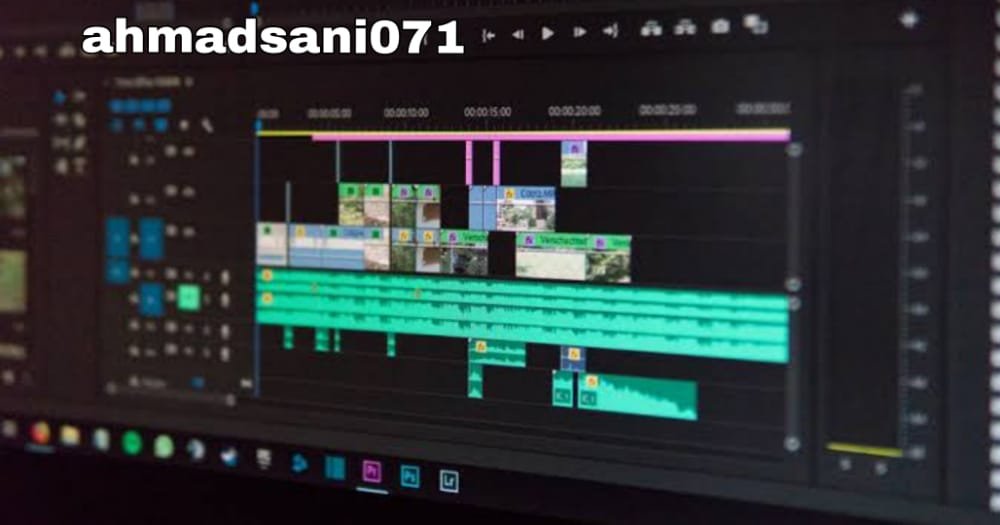The 6 Best Video Editing Tips for Beginners
It’s time for the post-processing phase of the struggle once you’ve finished filming a YouTube video editing, a movie, or a music video.
Similar to filming, this process involves a strong balance of technical know-how and creativity.
And in this article, we’ll share some useful hints, approaches, and “life hacks” with you that will make the video editing process simpler and more efficient.
These suggestions won’t exactly teach you how to edit your video clips,
but they can help you reduce the amount of time you spend editing and ultimately generate better results.
Select the correct software.
Selecting the appropriate software for you and your job is the first step in streamlining your video editing process.
Although they all often include the tools you need to make ordinary video edits,
you could favor one over the others because to its usefulness, digital interface, and functionality.
Instead of just using the newest, most cutting-edge video editing program available,
the key is to choose what functions for you and your editing style.
Top favourites include DaVinci Resolve, which has a free and feature-rich Lite version,
After Effects, Premiere Pro, Avid Media Composer, Final Cut Pro, and others.
If you’re seeking to test some less well-known but very effective alternatives,
you might also want to give Lightworks, Autodesk Smoke, and Sony Vegas a shot.
The best video editing programs for newcomers
After Effects, Adobe Premiere Pro, Avid Media Composer, Final Cut Pro, and DaVinci Resolve,
which provides a free and feature-rich Lite edition, are some of the most well-liked video editing software for novices.
There are several free video editing programs, like Apple iMovie,
although they are frequently less feature-rich than expensive alternatives, support fewer file types, or have restricted functionality.
You might make and collect your video snippets using a free video editing program for shorter clips, YouTube videos and especially for social networking.
Utilize a quick computer
No, in this part we won’t be comparing PCs with MACs.
Any brand or model of computer is OK as long as it is quick enough to hold large file and allows
you to focus more on your editing tasks without having to worry about slow rendering.
A speedier storage drive (SSD) will enable you to access your files and software more quickly and will reduce the time it takes for rendering, loading, and exporting.
If you’re going to be editing professionally or for a living, you’ll also need to buy the appropriate video card and processor for your editing
programme, as well as boost the memory (RAM) on your computer to at least 8GB.
Both PCs and Apple computers can be used as video workstations, while a PC is typically simpler to upgrade and custmoize on your own.
On Android and Apple mobile devices and tablets, you can utilise various video editing tools, although their capabilities and quality are frequently lower.
On an iPad or iPhone, editing videos is also much more difficult than it is on a powerful desktop or laptop computer.
Also, don’t forget about your monitors.
You may view, organise, and work with big volumes of material more conveniently by setting up a dual monitor setup.
Study tutorials on video editing.
There are dozens of helpful tutorials for making excellent video material on YouTube, blogs, and educational websites.
The majority of tutorials you’ll find online are free, which increases their accessibility.
You can find a ton of highly specific instructions to help you enhance your video content on websites like Video Copilot, Skills Are, and Red Giant Tutorials.
Target the software version of the program you’re running when searching for instructions on
how to attain particular appearances and finish particular activities.
From one version to the next, many businesses change the menu options and functionality.
Get the project files
Many novice video editors like to use the same project files as the course instructors when following along.
Your work will perfectly resemble the demo’s sample, which will aid in your understanding of the stages.
For precisely this reason, a lot of tutorials let you download the project files.
You can repeat a process with your own you tube video files once you’ve mastered a technique.
Follow Rule 321:
Video editors using any application should apply the 321 rule, just as woodworkers are taught to measure twice and cut once from the beginning.
Keep three duplicates of everything you produce, one of which should be physically segregated from the other two locations.
Remembering your creative objective—to create a wonderful story—is one of the most crucial lessons you should learn from this article.
Make your film visually appealing and dramatically engaging to effectively evoke the right emotions and communicate your desired message.
This goes beyond the basics of trimming unnecessary footage and rearranging your pieces.
Instead of merely adding a tone of effects to wow your audience, use your practical and technical skills to do this..


























